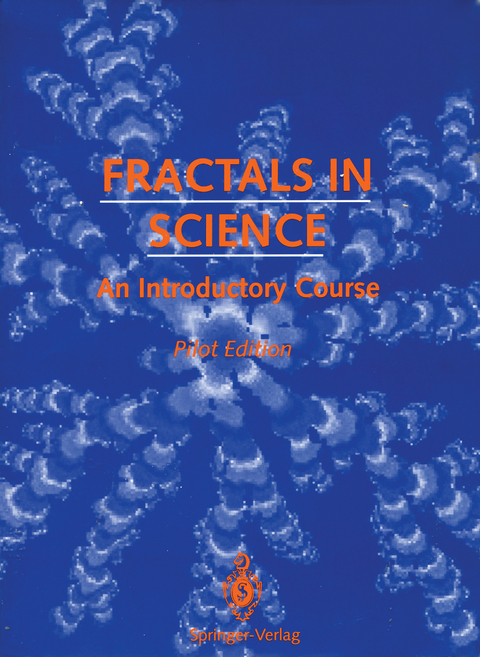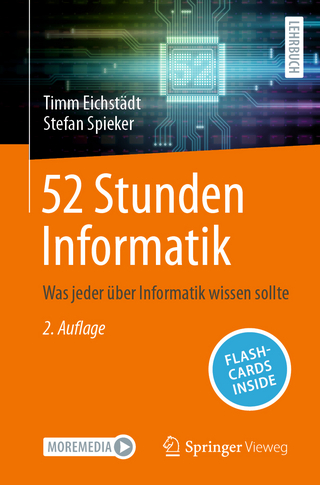
Fractals in Science
Springer-Verlag New York Inc.
978-0-387-94361-9 (ISBN)
1. From Coin Flipping to Motion of Molecules.- 1.1 Introduction.- 1.2. Randomness: Making Predictions Even When No One Knows What Will Happen Next.- 1.3. How Often Something Happens (Probability Distributions).- 1.4 Random Movement (Random Walks).- 1.5 Pascal’s Triangle.- 1.6 Average Displacement and Average Squared Displacement.- 1.7 Diffusion.- 1.8 Periodic Precipitation: Liesegang Rings.- 1.9 Postlude: The Meaning of Models.- Appendix A Demonstration that Average Squared Displacement Is Equal to Number of Steps Taken.- Appendix B. Preparation for Liesegang Ring Experiment.- 2. Fractals in Nature. Growing and Measuring Random Fractals.- 2.1 Introduction.- 2.2. Coastline.- 2.3. The Meaning of Dimension.- 2.4. Growing Random Patterns.- 2.5. Computer Measurement of Fractal Dimension.- 2.6. Modeling the Growth of a Fractal Pattern.- 2.7. The Hele-Shaw Experiment.- 2.8 Branching Patterns Formed by Bacterial Colonies.- 2.9 Termite Nesting and Foraging in Two Dimensions.- 2.10 Fractal Root Systems.- 2.11. Research!.- Appendix A. Dimensions and Logarithms.- Appendix B. Construction of ECD and Hele-Shaw Cells.- Appendix C. Using Video Frame Grabbing.- Appendix D. Using the Scanner for Imaging.- Appendix E. Preparing the Carrageenan Solutions.- Appendix F. Using the Vernier pH Meter.- Appendix G. Preparation of Bacterial Growth Experiment.- Appendix H. Constructing the Cell for a Termite Colony.- Appendix I. Constructing Rhizotron for Root Systems.- 3. Growth Patterns in Nature: Percolation.- 3.1 Growing a Forest.- 3.2 Burning a Forest.- 4 DNA and Literature.- 4.1 DNA Sequences.- 4.2 Storing Information in DNA.- 4.3 Word Occurences and Zipf’s Law.- 4.4 Landscapes of Literature and DNA.- 4.5 Discover coding regions in DNA.- A Answers to problems..- B Log-Log-paper.- C Thisand That.- 5 Spin Glasses and Neural Networks.- 5.1 Introduction.- 5.2 Magnetic Order.- 5.3 Ising Model.- 5.4 Magnetic Disorder.- 5.5 Spin Glasses.- 5.6 Hopfield Model.- 5.7 Bibliography.- 6 Lightning and Soap Films.- 6.1 Introduction.- 6.2 Electric Field.- 6.3 Electrostatics.- 6.4 Laplace Equation.- 6.5 Numerical Approach to our Main Task.- 6.6 Fractal Growth.- 6.7 Bibliography.- 7 Analyzing Rough Surfaces Digitally.- 7.1 Introduction.- 7.2 Defining the Self-Affine Surface.- 7.3 Activity: The Paper Tear Experiment.- 7.4 The Paper Tear: Understanding Experiments with Models.- 7.5 Testing the Minimal Energy Model.- 7.6 Conclusion.
| Zusatzinfo | 320 p. |
|---|---|
| Verlagsort | New York, NY |
| Sprache | englisch |
| Maße | 203 x 254 mm |
| Themenwelt | Mathematik / Informatik ► Informatik ► Theorie / Studium |
| Mathematik / Informatik ► Mathematik ► Geometrie / Topologie | |
| Naturwissenschaften ► Physik / Astronomie ► Astronomie / Astrophysik | |
| Naturwissenschaften ► Physik / Astronomie ► Theoretische Physik | |
| ISBN-10 | 0-387-94361-7 / 0387943617 |
| ISBN-13 | 978-0-387-94361-9 / 9780387943619 |
| Zustand | Neuware |
| Haben Sie eine Frage zum Produkt? |
aus dem Bereich


